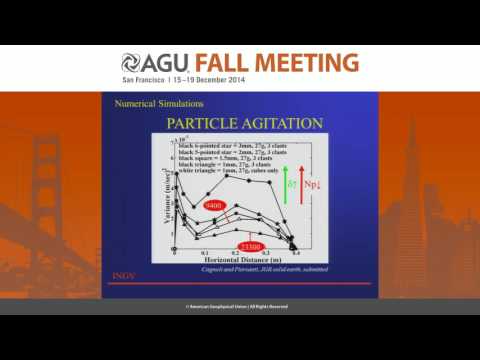Description:
Explore a 22-minute conference talk from the 2014 AGU Fall Meeting that delves into predicting geophysical flow mobility. Examine laboratory experiments and numerical simulations investigating the effects of grain size and flow volume on dry granular flows of angular rock fragments, analogous to pyroclastic flows and rock avalanches. Learn about the linear relationship between scaling parameters and how finer grain sizes and smaller flow volumes increase flow mobility. Discover the role of particle agitation, energy dissipation, and deposit accretion in determining flow behavior. Gain insights from 3D discrete element modeling, which confirms experimental findings and reveals the impact of initial mass compaction on mobility. Understand the importance of considering particle interactions in accurately predicting geophysical flow behavior and assessing associated hazards.

Prediction of Geophysical Flow Mobility
Add to list